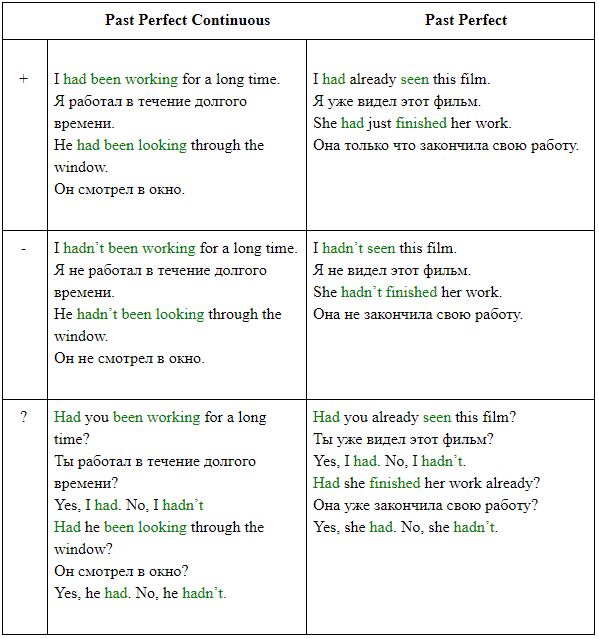

However, 'would' is always followed by the infinitive, but 'had' is followed by the past participle. Be careful, because the short form for 'would' is also 'd. It's 'had' + been (the past participle of 'be')+ verb-ing.
PAST PERFECT CONTINUOUS VS PAST PERFECT HOW TO
The past perfect continuous is composed of two elements - the past perfect of the verb to be (=had been) + the present participle (base+ing). Here's how to make the past perfect continuous. When the police questioned him, John said, "I was working late in the office that night." = When the police questioned him, John told them he had been working late in the office that night.Jane said, "I have been gardening all afternoon." = Jane said she had been gardening all afternoon. The past perfect progressive (continuous) is used to describe an action that started in the past and was still in progress when a second action started.Normal order in the past or looking back to an. Complete the sentences with the correct form of the verbs in brackets. It is the equivalent of the past continuous and the present perfect continuous in direct speech: However, when we look back from a certain time in the past to tell what had happened before, we use Past Perfect. Unit 2 - Exercise 2 - Past perfect simple and continuous. This form is also used in reported speech.

Her friends had been thinking of calling the police when she walked in. It had been raining hard for several hours and the streets were very wet. The past perfect helps talk about something that happened before a certain point in the past, whereas the past perfect continuous is used to talk about. We had been trying to open the door for five minutes when Jane found her key. Had you been waiting long before the taxi arrived?. When the police questioned him, John said, "I was working late in the office that night." = When the police questioned him, John told them he had been working late in the office that night.ĭe past perfect continuous bestaat uit twee elementen - de past perfect van het werkwoord to be (=had been) + het tegenwoordig deelwoord (base+ing). Jane said, "I have been gardening all afternoon." = Jane said she had been gardening all afternoon. The past perfect continuous is composed of two elements - the past perfect of the verb to be (had been) + the present participle (base+ing). Its verb form is had been + present participle form. The past perfect simple focuses more on the completion or the result than the action itself. Meanwhile, the past perfect progressive tense focuses on the activitys duration in the past. Het is het equivalent van de past continuous en de present perfect continuous in directe rede: The past perfect continuous focuses more on the action itself. The past perfect is made from the verb had and the past participle of a verb: I had finished the work. Her friends had been thinking of calling the police when she walked in.ĭeze vorm wordt ook gebruikt in indirecte rede. It had been raining hard for several hours and the streets were very wet. We had been trying to open the door for five minutes when Jane found her key. The past perfect progressive (also called past perfect continuous) is a verb tense which is used to show that an action started in the past and continued up.






 0 kommentar(er)
0 kommentar(er)
